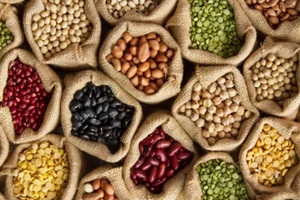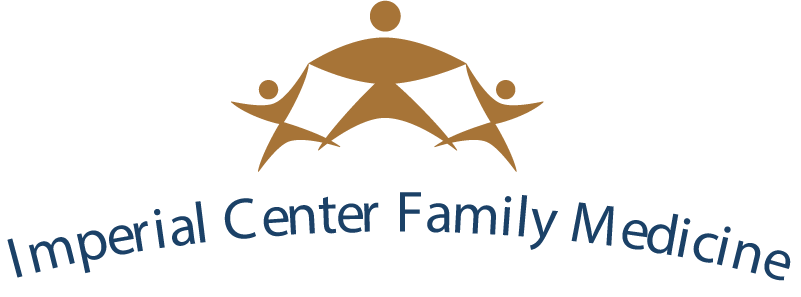 Your body needs cholesterol, but too much “bad” cholesterol can lead to heart disease. One of the most effective modifications you can make to your diet to lower your cholesterol is increasing your fiber intake. Soluble fiber has been shown in cholesterol screening tests to directly help reduce the amount of LDL or “bad” cholesterol in your blood.
Your body needs cholesterol, but too much “bad” cholesterol can lead to heart disease. One of the most effective modifications you can make to your diet to lower your cholesterol is increasing your fiber intake. Soluble fiber has been shown in cholesterol screening tests to directly help reduce the amount of LDL or “bad” cholesterol in your blood.
This article explores how fiber supports healthy cholesterol levels and offers tips for getting more fiber in your diet.
How Fiber Lowers LDL Cholesterol
Dietary fiber refers to the components of plant foods that your body cannot digest and is contained in fruits, veggies, whole grains, nuts, and beans. There are two main types of fiber:
- Soluble fiber dissolves in water to form a material that is similar to a gel in consistency. It’s found in oats, apples, citrus fruits, carrots, psyllium, and flaxseeds.
- Insoluble fiber is incapable of dissolving in water and goes through the digestive system without breaking down. Sources include wheat bran, veggies, and whole grains.
Soluble fiber has been shown to directly lower LDL or “bad” cholesterol levels through several mechanisms:
- It binds with bile acids and cholesterol, preventing absorption and helping with excretion.
- It reduces cholesterol production in the liver by promoting the production of short-chain fatty acids during the fermentation process.
- It slows digestion, leading to decreased absorption of fats and cholesterol.
While insoluble fiber does not reduce cholesterol, it still provides benefits by promoting regularity, supporting gut health, and increasing feelings of fullness.
Focusing on high-fiber foods will ensure your intake includes both forms of fiber. For significant LDL reduction, aim for a minimum of five to ten grams of soluble fiber every day.
Top Fiber-Rich Foods
Focusing on high-fiber foods will ensure you get a mixture of soluble and insoluble fiber. Here are some great options:
Oats
Oats contain a specific form of soluble fiber referred to as beta-glucan. Just 1 cup of oats delivers 4 grams. Beta-glucan forms a thick gel that traps cholesterol, promoting excretion. Studies show that 3-5 grams of beta-glucan per day can lower LDL by up to 10%.
Legumes
 Beans, lentils, peas, and other legumes are packed with soluble fiber. A cup of navy beans has an impressive 19 grams. Replacing meat with legumes several times per week is an easy way to boost fiber intake significantly.
Beans, lentils, peas, and other legumes are packed with soluble fiber. A cup of navy beans has an impressive 19 grams. Replacing meat with legumes several times per week is an easy way to boost fiber intake significantly.
Fruits
Many fruits are great sources, particularly those that have edible seeds and skins. Pears, apples, oranges, strawberries, raspberries, and avocados are excellent choices. Fruit fiber may also help control blood sugar.
Vegetables
Leafy greens, broccoli, carrots, artichokes, and squash provide insoluble and soluble fiber. Aim for a variety of colorful veggies, which provide antioxidants and phytonutrients as well.
Nuts and Seeds
Almonds, pistachios, ground flaxseeds, walnuts, and chia seeds offer heart-healthy fats, too. Sprinkle seeds on yogurt or blend nuts into smoothies. But watch portions, as nuts are high in calories.
Psyllium Supplements
If diet alone doesn’t provide enough soluble fiber, consider a psyllium supplement. Studies show that 10 grams per day can lower LDL levels significantly, especially for those with high cholesterol already. Ask your doctor before starting psyllium.
Helpful Tips for Boosting Fiber Intake
Transition slowly when increasing dietary fiber to allow your body time to adjust. Here are some ways you can do just that:
- Have oatmeal or high-fiber cereal such as bran flakes for breakfast.
- Add chia seeds, flaxseeds, hemp hearts, or walnuts to yogurt or smoothies.
- Snack on raw veggies and fruits such as bell peppers, apple slices, or berries.
- Drink vegetable smoothies made with spinach, kale, or carrots.
- Choose whole grains such as quinoa, bulgur, brown rice, and whole-grain bread.
- Eat bean or lentil soups and stir-fries made with veggies.
- Replace croutons on salads with nuts, seeds, or shredded veggies.
Make changes gradually and drink plenty of fluids. Target 25-35 grams of total fiber every day from whole foods for optimal health benefits.
Other Factors That Support Cholesterol
While fiber should be your first focus, other diet and lifestyle changes matter too:
 Exercise: Aerobic activity for 30 minutes most days helps raise HDL and lower triglycerides. Combine aerobics with strength training for the best possible results.
Exercise: Aerobic activity for 30 minutes most days helps raise HDL and lower triglycerides. Combine aerobics with strength training for the best possible results.- Stress management: Chronic stress has been shown to contribute to increased cholesterol. Try daily meditation, yoga, or going for a walk to decompress.
- Weight loss: Losing just 5-10% of excess weight can significantly improve cholesterol if you are overweight. Focus on whole foods and getting active.
- Fat intake: Limiting trans and saturated fats contained in full-fat dairy, processed foods, and red meats can help lower LDL.
- Balanced diet: A healthy diet focused on fruits, lean proteins, whole grains, veggies, and healthy fats promotes optimal cholesterol levels.
- Quit smoking: Smoking damages arteries and lowers HDL. Kicking the habit provides cholesterol benefits.
Achieve Optimal Cholesterol Levels with Imperial Center Family Medicine
Controlling cholesterol takes work, but the benefits for the health of your heart are huge. By making fiber a priority and adopting other healthy habits, you can get your cholesterol numbers headed in the right direction.
Pay attention to your dietary changes and get regular screenings to ensure you stay on track. Small daily improvements will yield big rewards over time. When it comes to understanding and managing your cholesterol, partnering with Imperial Center Family Medicine can make all the difference.
Our knowledgeable healthcare providers offer comprehensive cholesterol screening along with individualized lifestyle counseling. Contact us today at 919-873-4437 or online to take control of your cardiovascular health.
